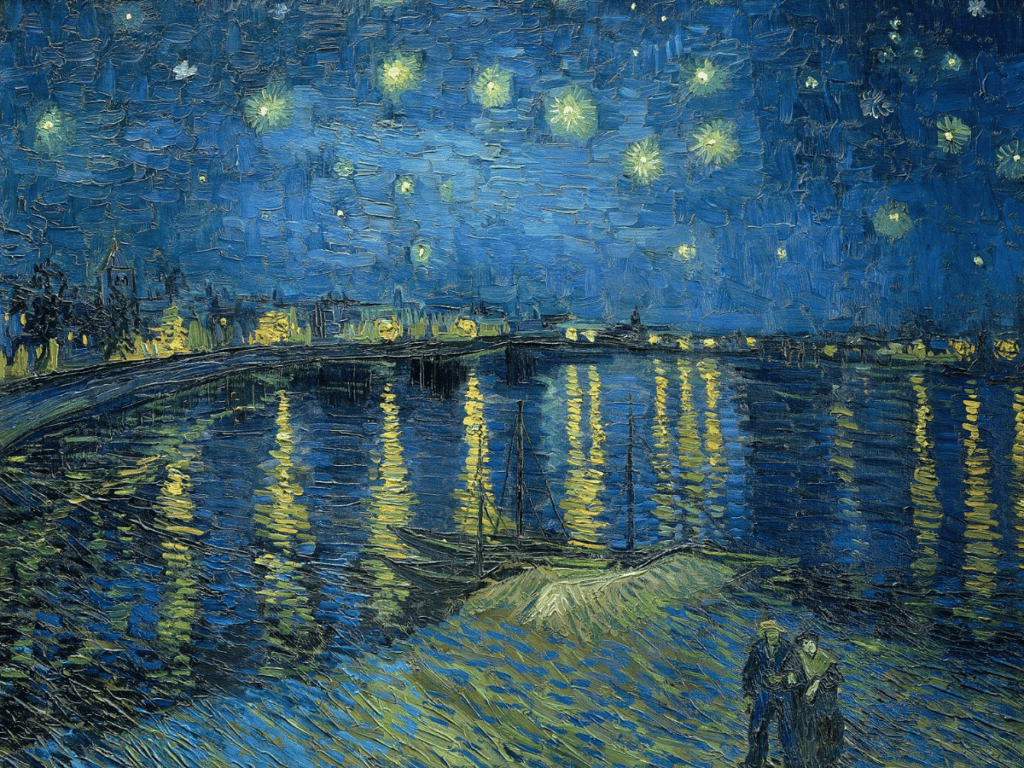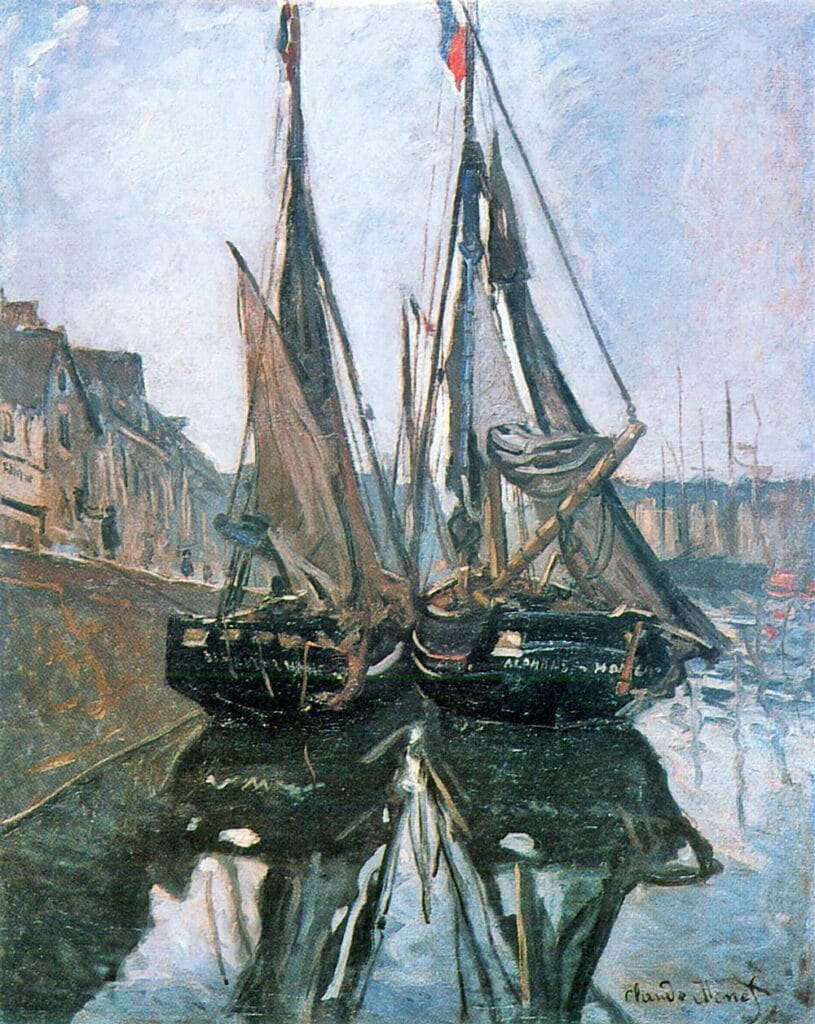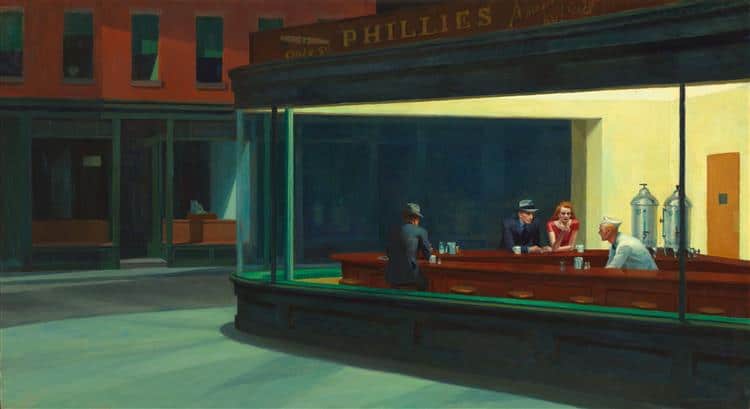Repetition in art is a principle of design and tool used by artists to create unity and balance. By repeating particular elements in a design, artists can create rhythm and tie different sections of the piece together.
In this guide, learn what repetition is and how famous artists use repetition to create aesthetically pleasing compositions.
Disclaimer: Fine Art Tutorials is a reader supported site. When you make purchases through links on this site, we may earn a small commission at no extra cost to you.
Definition of repetition in art
Repetition in art refers to the act of repeating an element, such as a line or colour, throughout a work. It can be used to create rhythm and structure, lend visual interest to a piece, or emphasise certain elements. Repetition can also be used to create cohesion in a piece, as well as create a sense of balance or flow.
Examples of repetition in art

In the painting ‘The Milkmaid’ by Vermeer, the bright blue colour of the apron is repeated in the table cloth. This ties the two focal points in the piece together and creates a viewing rhythm.

The repetition of stars in the night sky in ‘Starry Night over the Rhone’ creates rhythm, balance and an organic pattern. Van Gogh used a colour scheme of complementary colours to bring order to the artwork. Using only two colours and their extended ranges of tones, shadows and highlights, ties different elements together. The repetition of the short brushstrokes in the grass on the bank, the stars, and the swirling sky connect the composition and create a unified whole.
Elements of art
In art, the elements are the building blocks used to create a work of art. These elements include line, shape, form, colour, texture, value and space. Each element has its own unique characteristics, and by repeating certain elements throughout a work of art, the artist can unify different areas.

Colour is one element that artists commonly repeat throughout artworks. By using a colour scheme in an artwork, artists can create colour harmony and make elements in the piece appear less disjointed. Many painters will use a limited palette of colours, to ensure that there is order to the piece. For example, artists may use a primary palette of magenta, phthalo blue and cadmium yellow and mix other hues, tones tints and shades from these colours. Monet often used more limited colour palettes, which is evident in his painting of the Houses of Parliament at Sunset.

Vincent van Gogh used thick paint and gestural brushwork to repeat textures throughout his paintings. The repeated short impasto strokes that hold their shape on the canvas contribute to the movement and rhythm of the piece, unifying the different elements. Then van Gogh created variety in the direction of the strokes to add to the liveliness and dynamism of the piece.
Principles of art: Repetition
The principles of art are the rules artists use to compose and arrange their artwork. One of these principles is repetition.
The other principles of art are: balance, emphasis, harmony, contrast, variety, movement, unity, pattern, proportion and scale. By combining these principles with repetition, artists can create aesthetically pleasing compositions that convey their message or tell a story.
Pattern and repetition

Repetition is often used in conjunction with pattern to create a strong visual impact. Patterns are created when elements are used to create a motif, image or design element, which is then repeated across the surface in a specific order. By repeating elements in different ways, the artist can create intricate and complex patterns that draw viewers in.
Regular

Regular patterns are designs that artists repeat across the surface in a predictable way, with even spacing between elements. William Morris is a great example of an artist and designer who created beautiful, intricate pattern designs that had regular, symmetrical formations. Regular patterns are the most balanced and unifying types of artworks.
Irregular
Irregular patterns are less predictable than regular patterns, with different elements positioned unevenly across the surface. These patterns have repeating motifs, however, they may progressively change across the surface, or repeat in a non-uniform way. This type of pattern can appear asymmetrical, organic, less balanced and unified, but more dynamic than regular patterns.

Gustav Klimt used irregular patterns in his artworks, on the gold dresses and fabrics in his portrait paintings. In ‘The Kiss’, the gold dress is adorned with colourful, jewel like patterns, that lead the eye in, creating a sense of rhythm around the focal point of the two figures.
Balance and repetition

Repetition can also be used to create balance in an artwork, by repeating certain elements on either side of the composition. This type of repetition creates a sense of visual harmony and stability within the work.
Symmetrical balance

Symmetrical compositions are fairly common in paintings. This type of composition creates a sense of visual harmony. Artists can repeat elements on both sides of an image, whether that’s along the horizontal, vertical or diagonal axis to balance a piece.
An example of a painting that uses symmetry and balance by repeating elements in the background on both halves of the canvas can be seen in Caspar David Friedrich’s ‘The Wanderer Above the Sea of Fog’. This balance provides visual rest for the viewer, leading the eye to focus on the figure in the foreground.
Repetition used to balance a piece, to create symmetry is a soothing, in the way that it creates order, enabling viewers to better understand and process and image.
Radial balance

Radial balance is another type of balance that can be achieved through repetition. This type of composition creates a radial, or circular shape to the work, in which elements are repeated from the centre point outwards. A great example of this balance is seen in the centre of the famous illusion ‘Development’ by M.C Escher.
Asymmetrical balance
Asymmetrical balance is created when elements are repeated, however they do not appear to be even. Instead of there being a mirror-like image balanced in the different axis of the painting, elements will be unevenly spaced. However, the image has inherent balance, due to there being similar visual weight on each side of the canvas.
Instead, this type of composition has an unbalanced feel due to the different scales and positioning that the artist uses in their work.

‘Nighthawks’ by Edward Hopper is an example of an artwork that uses asymmetrical balance. The random placement of the figures, furniture and objects in the painting creates a sense of tension and movement, instead of restful symmetry. However, Hopper balanced the visual weight on each side. This is due to the similarities in saturation, hue, colour scheme and the mirroring of repeating chairs in the bar and windows on the building to the left which adds coherence. This type of balance is dynamic and energetic, inviting viewers to explore the work and all its details.
Rhythm and repetition
Repetition creates rhythm in an artwork. Rhythm is a principle of design that is harder to define than the others. However, it describes how elements in the composition affects the viewer’s visual path around the piece. Contrast attracts attention, it creates salience and focus. However, the repetition of elements can lead the viewer’s eye around, creating cadence and viewing tempo.

For example in Winslow Homer’s seascape piece, the repeated shapes of ripples along the barrel of the wave leads the viewer’s eyes rhythmically towards the focal point of the breaking wave. Rhythm is the successive draw of each element in a piece, which creates a viewing path and tempo. Repeated elements draw viewer’s eyes around in a way that feels sequential, providing a ‘beat’.
Finally
Repetition in art ties areas of a painting together, that may otherwise appear separate. It creates cohesion and it can even provide balance and unity. When planning the composition of a piece, think about how you might repeat particular elements. Whether that’s a specific colour, shape, line or form, to lead the viewer’s eye around the artwork. Connect different elements with repetition to give meaning to a piece.

